So, there has been a lot of talk recently about this gal, Carol Danvers. Formally known as Ms. Marvel, in 2012 she took up the mantle of Captain Marvel, and the comic-book world went crazy. Since then she has acquired a snazzy new suit, a gathering of fans that can best be described as charmingly cult-like, and she will be the first Marvel Comics female to have her own solo superhero film. So, what’s her deal? Why did this character, who has been around since the 1960s, suddenly gain this groundbreaking following?
Dearest readers, I am a member of the Carol Corps, and I would like to share with you the history of an amazing lady. My hopes is that you will see the light and join us in love and admiration for Carol Danvers.
Let’s Mr. Peabody and Sherman this noise all the way back to 1968. The character of Major Carol Susan Jane Danvers was introduced for the first time in Marvel Super-Heroes #13 as an Officer in the United States Air Force and, specifically, the Security Chief of a restricted military base. It is there she meets Dr. Walker Lawson, aka Captain Marvel. Captain Marvel is Kree, an alien race from the planet Hala; he is also a hero of his race, come to Earth to do some hero-ing around here for a while. Major Carol is kidnapped while helping the self-proclaimed Captain and gets caught in the explosion of a Kree device. Captain Marvel rescues her but she’s pretty messed up, injury-wise.
Flash forward to 1977. Carol comes back stronger than ever, now sporting a mask and a belly window in her own self-titled book, Ms. Marvel. Apparently, the explosion that she was subject to caused her to genetically meld with Captain Marvel, turning her into an alien/human hybrid. Consequentially, she has superpowers now! Neat! She proceeded to help out various teams, guest staring in other books such as The Defenders and The Avengers. A mere two years later in 1979, Ms. Marvel was officially initiated into the Avengers during Avengers #183.
Since her inception into super-dom, the character of Carol Danvers has been considered a feminist icon. Part of this had to do with certain provocative associations for the time. The use of the word “Ms.,” for example, was considered quite the feather-ruffler as it was highly associated with the feminist movement. This was coupled in with the fact that when Ms. Marvel wasn’t off saving the day, civilian counterpart Carol Danvers was fighting for equal pay for equal work. Original writer Gerry Conway even noted in his introduction to the series that you can see a lot of parallels between Carol’s personal quest for her identity and the modern woman’s quest for selfhood.
Sadly, though, feminism and comic books have always had a rocky relationship. While the 70s saw a flux in the addition of feminism to comics, the 80s saw a dip. In 1980, The Avengers #200 was published, and suddenly Ms. Marvel was super pregnant. It had only been three days, and she is full-on full-term. We promptly learn that Ms. Marvel had been kidnapped and taken to an alternate dimension. She is brainwashed by this guy, Marcus—severely creepy son of Immortus—and impregnated. Ms. Marvel is then brought back to Earth where she has this baby—who actually is Marcus because you can totally impregnate ladies with yourself—who grows up super rapidly only to say, “Hey, Mom, pack your junk, we’re going back to the alternate dimension”, to which she acquiesced. All the while, the Avengers seem to be weirdly okay with all of this.
And if you thought that story sounded pretty rape-y, you were not the only one.
Fans and creators alike started to come to Carol Danvers’ defense, pointing out the inappropriate nature of this story. Former Ms. Marvel writer Chris Claremont commented on the malapropos nature of the whole arc. Carol Strickland, comic-book historian and author, wrote an essay that gained traction entitled “The Rape of Ms. Marvel,” calling into question the validity of using “rape by another name” as a short cut for narrative substance. This was one of the first major instances of the fans of a female character fighting back for the feminist rights of a fictional character, showing that the representation of this in such a casual light was, in fact, highly detrimental as well as unseemly.
One year later in 1981, Mr. Claremont adequately—though not completely—undid the horrible Marcus story through Ms. Marvel’s entanglement with the X-Men. In the issue Avengers Annual #10, Ms. Marvel is tracked down attacked by Rogue, a mutant who absorbs the powers and memories of those she touches. Normally, this is a temporary effect, but if Rogue holds on to her victim for too long she can absorb them permanently, leaving the person next to dead. This is what happens to Ms. Marvel. She lives, but the side effect of this is that Rogue now has super strength and can fly (if you have ever been a fan of Rogue being able to punch stuff super good and zip around in the air in a more permanent fashion, you have Carol Danvers to thank for that). The side effect for Ms. Marvel is that she can no longer remember what happened to her.
She is returned to Earth, and the weird Marcus baby-now-adult dies of old age. Carol’s memories are restored by Professor Xavier, and she—as well as the reader—receives the satisfaction of confronting the Avengers about them being a bunch of idiots and not being bothered to notice her insane brainwashing during the whole Marcus situation. Jumping ship to the title of Uncanny X-Men, she then proceeds to use her civilian persona to enter the Pentagon, wipe their files on the X-Men as well as on herself, thus allegorically severing herself as Ms. Marvel.
If that wasn’t enough, in 1983 both Carol and comic readers were affected by the tragic death of Mar-Vell, aka Captain Marvel. Upon discovering that he basically has space cancer, Mar-Vell decides that, rather than flying back to his home planet of Hala, he’s going to hang out and have Earth-Vacation until the sickness takes him. It does, and there was much universal sadness. It has been noted that the only people who stay dead in the Marvel universe are Uncle Ben, Mar-Vell, and Bucky Barnes.
For the rest of the 80s and into the 90s, Carol takes on a couple of different names and gets a couple of weird character twists. For a while, she’s dicking around space with the X-Men, and—due to even more alien experimentation—she becomes a new character called Binary, who is basically able to harness the power of an actual star. Then, suddenly, she’s back on Earth and back on the Avengers, now being called Warbird. Also, now she’s an alcoholic who gets suspended from active duty. Interesting story arcs, though not some of Carol’s finest personal moments.
Then the 2000s rolled around, and all of a sudden, everyone wanted a piece of Carol Danvers!
Brian Michael Bendis’ crossover book, House of M, dropped its first issue in 2005 and guess who’s back? In this story, Wanda Maximoff, aka the Scarlet Witch, suffers from a mental breakdown, and due to her ridiculously terrifying powers actually alters the fabric of reality in order to relocate her lost children. In this erroneous reality she is now called Captain Marvel, a title Magneto has given her after her incredible service as a spy for him during the Mutant-Human War. She is granted special hero status despite not being a mutant and is considered the most popular superhero on Earth.
One year later, Ms. Marvel is back with her own solo book again as well as being an integral figure during the events of yet another crossover event, Civil War. She fights along side Tony Stark as one of the Pro-Registration heroes. She’s also dating Wonder Man for a little while during this stint.
In 2008, Carol plays yet another integral role in Secret Invasion. After the war with the Skrulls, Norman Osborn shows up and takes over the registered Avengers for a while, something that does not sit fantastically well with Ms. Marvel. She leaves the team; then Osborn appoints Karla Sofen (aka Moonstone) to be the new Ms. Marvel. He orchestrates a way for Carol’s powers to overload, causing her to supposedly die. Moonstone takes over the role of Ms. Marvel in the self-titled solo book. An apparently-not-dead Carol Danvers returns with the New Avengers and character—called Storyteller—who help Carol reclaim her title from Moonstone.
For a while, Carol goes back to doing what she does best, helping out other Avengers. She’s fighting Captain Marvel Skrull clones; she’s helping out Steve Rogers and Iron Patriot during Siege of Asgard; she even pops up to help Spider-Man during the Dark Reign. It’s pretty snazzy, and people are pretty jazzed on Carol Danvers.
Then something magical happened.
In 2012, Marvel announced that Captain Marvel would be returning to the shelves and that Carol Danvers would be getting a new costume. Specifically, Ms. Marvel was going to assume the mantle of the beloved Mar-Vell, and she was to be written by esteemed writer and feminist, Kelly Sue DeConnick.
The internet exploded. Rampant fans were pouring out of the woodwork, attaching themselves to Carol Danvers, and it seemed that the bulk of them were women. While Carol had been interesting and active over the years, her feminist ideologies had been forgotten by many. In fact, most people remembered Ms. Marvel from the copious times she had made internet Top 10 Sexiest Superheroes lists. In just 2011, she had been #29 in Comics Buyer’s Guide’s list. This was a huge step up for a character that while not in print had, at length, been seen by many fans predominantly as a powerful but ultimately sexualized object.
DeConnick introduced her idea for the book being Carol searching for the meaning of what Captain Marvel’s legend meant to her, how she will take that on in herself, and how the rest of the Marvel universe would reply. She was given a new costume that was far more reminiscent of the original Captain Marvel and the respect that comes with being a ranking US Military Officer. DeConnick herself described the character as being reminiscent of famed Brigadier General and record-setting test pilot, Chuck Yeager.
The book has been wildly successful, and the fan base for this character has spread like a wild fire. She has continued to work with the classic Marvel teams such as the Avengers and was even inducted into the Guardians of the Galaxy in 2014 after the book picked up traction due to a remarkably successful cinematic stint. That same year was when Marvel Studios announced that they would be releasing a film titled Captain Marvel, starring Carol, in November of 2018.
So, for all the good and the bad that can be associated with Carol Danvers, what is it in all of this history that has elicited such a response from readers? Why did fans latch on to her so actively?
When she became Captain Marvel, Carol Danvers became something that the superhero community has normally only seen in a male character: she transcended her superhero persona. The same way that a character like Steve Rogers could don the mantle of any fallen hero and still be Steve Rogers—with his own principles and personality that makes him the hero—so, too, could Carol Danvers. Ms. Marvel, Warbird, Captain Marvel, while she herself holds to these titles with immense reverence, to the reader they become inconsequential because, at the end of the day, she has ascended to being the hero herself, rather than the symbol of the suit.
This has been reflected in the way that her fans have latched on to her through the self-pronounced (soon to be canonical thanks to Secret Wars), “Carol Corps.” Carol Danvers has become an icon for women in the comic book community, a symbol of hope, power, and a representation of strength in a search for identity. Her book features women of all shapes and sizes in all types of careers throughout time and space. Carol Danvers helps show the true essence of what a lady can do, can be, and what she can inspire in others.
I drank the Carol Corps Kool-Aid and I will never look back. Grab a cup and join me.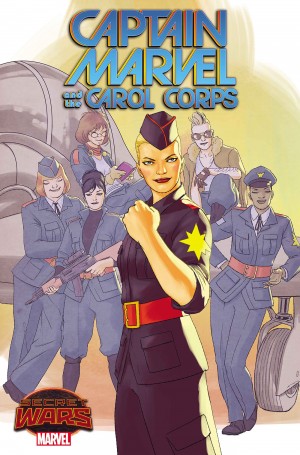

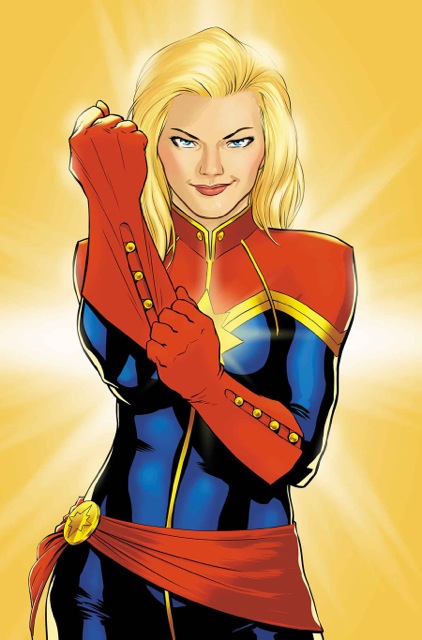
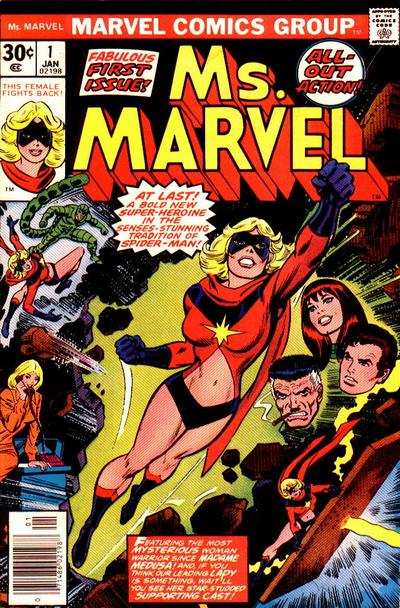

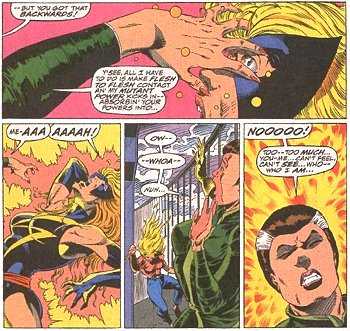
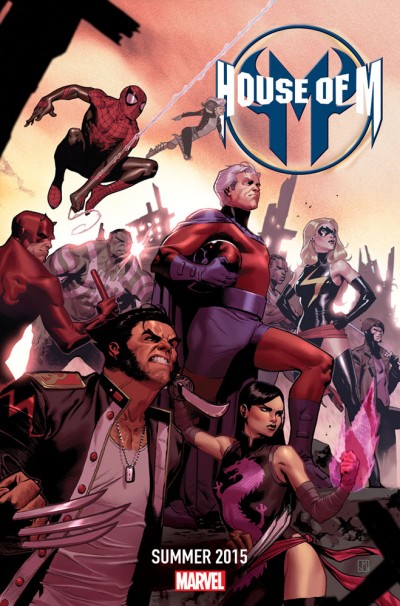
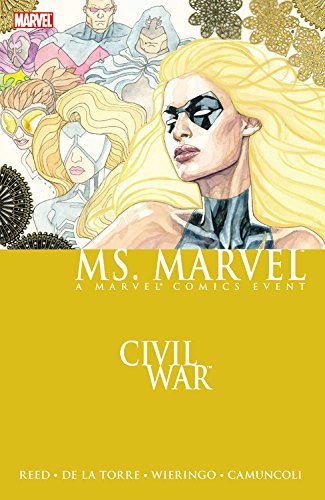
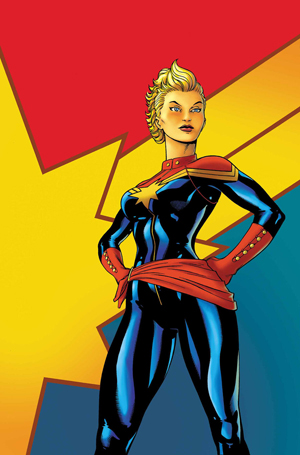
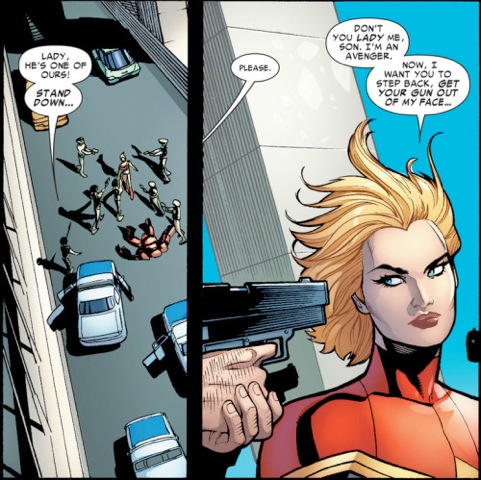
Comments are closed.